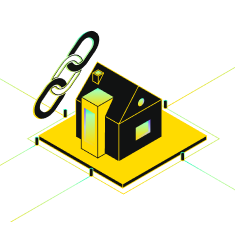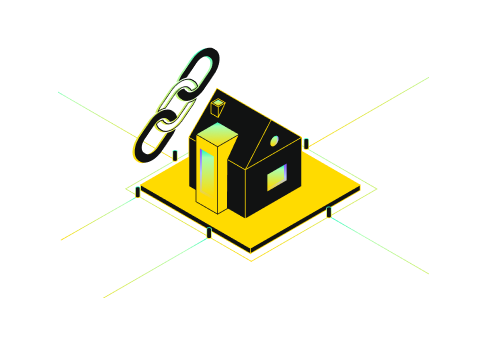Real-World Asset (RWA) tokenization is changing how we view and manage assets. This article explores what RWA tokenization is, why it is important, and what the future might hold.
What is RWA Tokenization?
Real-World Asset (RWA) tokenization converts physical items and traditional financial assets into digital tokens on a blockchain. This includes assets like real estate, art, currencies, commodities, equities, and bonds. It creates a digital representation of an asset. Then, its ownership rights are managed on-chain, bridging the gap between physical and digital worlds. This new process is quickly reshaping how we access, exchange, and manage assets. It represents a big shift in finance and technology.
Key Developments and Market Growth
The tokenization of RWAs is at a turning point. It is moving from small pilot programs to widespread adoption by institutions.
From Pilot to Proof
RWA TVL in DeFi hits $5B, showing tokenization can scale.
Wall Street Steps In
Tokenized assets hit $50B; ECB pilots €1.59B wholesale settlement.
Regulators Weigh In
Current SEC Chair Paul Atkins stated that the entire financial system will migrate to public blockchains.
The Big Expansion
Private credit and new players like Coinbase AM, Glasstower, and Ripple enter.
The $50 Trillion Horizon
Market projected at $30–50T, with McKinsey’s base case at $2T.
Core Types of Tokenized Assets
The variety of assets being tokenized is growing fast. This shows the broad potential of RWA tokenization. Here are some key categories:
Real Estate
Around $30 billion worth of real estate is either tokenized or planned for tokenization. Tokenization offers fractional ownership. It allows instant transaction settlement. These tokenized properties can also be used as collateral in Decentralized Finance (DeFi) platforms.
Equity
Platforms like Brickken help companies digitize their shares. This creates tokens for startup funding. It expands participation and brings liquidity to shares that were once hard to trade.
Debt and Money Market Funds
These grew significantly in 2024. They offer clear terms and standardized, auditable structures. They can serve as collateral in DeFi and institutional finance.
Commodities
Gold is a popular choice, with tokens like Tether Gold (XAUT) and Paxos Gold (PAXG). Other unique assets are also being tokenized. These include whiskey funds, diamonds, art, renewable energy projects, car financing, and Bitcoin mining. This makes these investments available to more retail investors.
Asset-Backed Securities (ABS)
JPMorgan Chase has tokenized auto loan receivables. This improves security and efficiency in payment processing. It reduces data breach risks and compliance burdens.
Infrastructure for Tokenized Assets: From DLT to Proof of Reserves
Blockchain and distributed ledger technology (DLT) is the foundation of asset tokenization. It creates a record system that cannot be changed. This system secures transactions and tracks asset ownership. It also provides programmable environments. These allow tokens to be created, traded, and transferred globally with less friction and real-time settlement. Because of this, DLT sets the base layer for everything else in tokenization.
On top of this base, smart contracts bring automation. These are self-executing agreements written in code. They handle payments, compliance checks, and asset transfers without middlemen. This lowers costs and increases efficiency. Smart contracts can also manage profit sharing, interest payments, and voting rights. At the same time, they can embed KYC (Know Your Customer) and AML (Anti-Money Laundering) rules into the lifecycle of a token. This makes the process not only faster but also safer.
Still, blockchain systems need reliable outside data. This is where oracles come in. They connect blockchains with off-chain information such as asset prices, ESG scores, and corporate actions. Chainlink is the most widely used provider in this space. Its services include Proof of Reserve, secure identity tools like DECO, live data streams, and Functions. These tools give blockchains verified data in real time and strengthen trust in tokenized assets.
Liquidity is another challenge for tokenized markets. Assets need to move smoothly across many blockchain networks. Cross-chain interoperability solves this problem. Chainlink’s Cross-Chain Interoperability Protocol (CCIP) is one leading standard. It lets institutional investors reach many markets without having to interact with each blockchain one by one. This flexibility supports broader adoption and deeper liquidity.
Trust also depends on proof that tokens are fully backed. Reserve audits make this possible. Chainlink’s Proof of Reserves solution checks reserves in real time and posts the results on-chain. This creates transparency for investors and prevents fraud or over-issuance. With audits in place, tokenization can scale with confidence.

Image by freepik
Why RWA Tokenization Is a Game Changer
Real-world asset tokenization changes how markets work. It makes them more open, faster, and safer compared to traditional systems. The benefits are not just for institutions. They also expand access for everyday investors.
One key advantage is liquidity. Tokenization breaks down large, hard-to-trade assets into smaller units. This fractional ownership lets more people take part in markets once reserved for the wealthy or large funds. It brings new global liquidity and makes trading simpler.
Transparency and security are also central. Blockchain creates a permanent record of every transaction. This improves trust, reduces fraud, and makes audits much easier. By putting assets on-chain, the risks tied to hidden or opaque systems are reduced.
Another benefit is efficiency. Smart contracts can replace middlemen by automating tasks like payments and compliance checks. This lowers costs and speeds up settlement, often within minutes instead of the two- or three-day delays common in traditional finance.
Tokenization also expands access through fractional ownership. Investors can hold smaller pieces of high-value assets, from real estate to private equity, that were once out of reach.
Finally, tokenized markets allow for new products and financial structures. By combining trading, settlement, and custody into one system, tokenization cuts complexity and counterparty risk. In some cases, costs can fall by up to 98% when managing tokenized portfolios across blockchains. Analysts estimate this could unlock $400 billion in yearly revenue for asset managers.
Leading RWA Platforms and Projects
Many platforms are driving this new era of finance. Here are five top projects by TVL (Total Value Locked) as of May 2025:
| Platform | TVL | Founded Time | Overview |
| BlackRock BUIDL | $2.88B | March 2024 | BlackRock's first tokenized fund on Ethereum, providing on-chain access to U.S. Treasury bills and cash equivalents. Expanded to Aptos, Arbitrum, Avalanche, Optimism, and Polygon in November 2024. By December 31, 2024, it managed $648.5M. |
| Ethena | $1.44B in USDtb | August 2024 | Offers USDe, a decentralized synthetic stablecoin, and USDtb, representing tokenized Treasury exposure. Bridges traditional finance yields with DeFi. |
| Ondo Finance | $1.25B | August 2021 | Connects DeFi and traditional finance. Products include USDY (US Dollar Yield token) and OUSG (Ondo Short-Term US Treasuries Fund), backed by BlackRock’s BUIDL. |
| Tether Gold (XAUT) | $820M | January 2020 | XAUT represents one troy ounce of gold, backed by physical reserves in Swiss vaults. Allows global, fractional ownership and can be redeemed for physical gold. |
| Paxos Gold (PAXG) | $770M | September 2019 | PAXG is 1:1 backed by physical gold held in LMBA-approved London vaults. Issued by a regulated U.S. entity and complies with NYDFS guidelines. |
Navigating the Regulation of RWA Tokenization
Tokenizing real-world assets brings both opportunities and challenges, especially in the legal and regulatory space. The rules are still evolving, and this uncertainty can create barriers for businesses, investors, and institutions entering the market.
Core Legal Considerations
- Property Rights: Defining ownership in tokenized form is not straightforward. Does the token itself equal ownership of the underlying asset, or does it simply grant rights to it? Clear definitions are critical.
- Contract Law: Smart contracts automate transactions, but questions remain about their enforceability in traditional courts. Issues such as liability for coding errors and how offer, acceptance, and consideration apply in self-executing code still need resolution.
- Securities Law: Depending on structure, a token could be classified as a security. If so, it triggers a wide range of compliance requirements, from disclosure rules to restrictions on trading.
Global Regulatory Approaches
Different countries are moving at different speeds. Jurisdictions like Singapore and Switzerland have established frameworks specifically for digital assets, avoiding the ambiguity of classifying them only as securities or commodities. In contrast, the U.S. remains fragmented, with regulators relying on existing laws like the Howey Test to determine whether a tokenized asset is a security.
Compliance in Practice
If a token is deemed a security in the U.S., issuers must register offerings with the SEC (or qualify for exemptions), maintain AML/KYC compliance, and provide transparent disclosures. Failure to comply can result in fines, lawsuits, and reputational damage.
Taxation Complexities
Tokenized assets also raise significant tax questions. Most jurisdictions treat profits from selling tokenized assets as capital gains, with rates differing for short-term versus long-term holdings. International transactions further complicate matters, as cross-border tax rules vary and require meticulous record-keeping.
The Real Transformation in Finance
Real-World Asset (RWA) tokenization is transforming global finance. It makes high-quality, yield-generating products more accessible and transparent. It also improves efficiency across markets. This is not a passing trend, it’s a fundamental shift.
The promise of a more transparent, efficient, and accessible financial system drives adoption. As physical and digital assets converge, the way we “own” things will change.
For years, the crypto industry pushed for regulatory clarity. While debates raged over Bitcoin classification and DeFi licenses, the real battle was already won. Traditional finance recognized that blockchain works—they just needed regulatory approval. The SEC chairman Paul Atkins gave it a green light.
This isn’t about crypto competing with traditional finance. It’s about traditional finance fully embracing blockchain, making the distinction between these two pointless.

